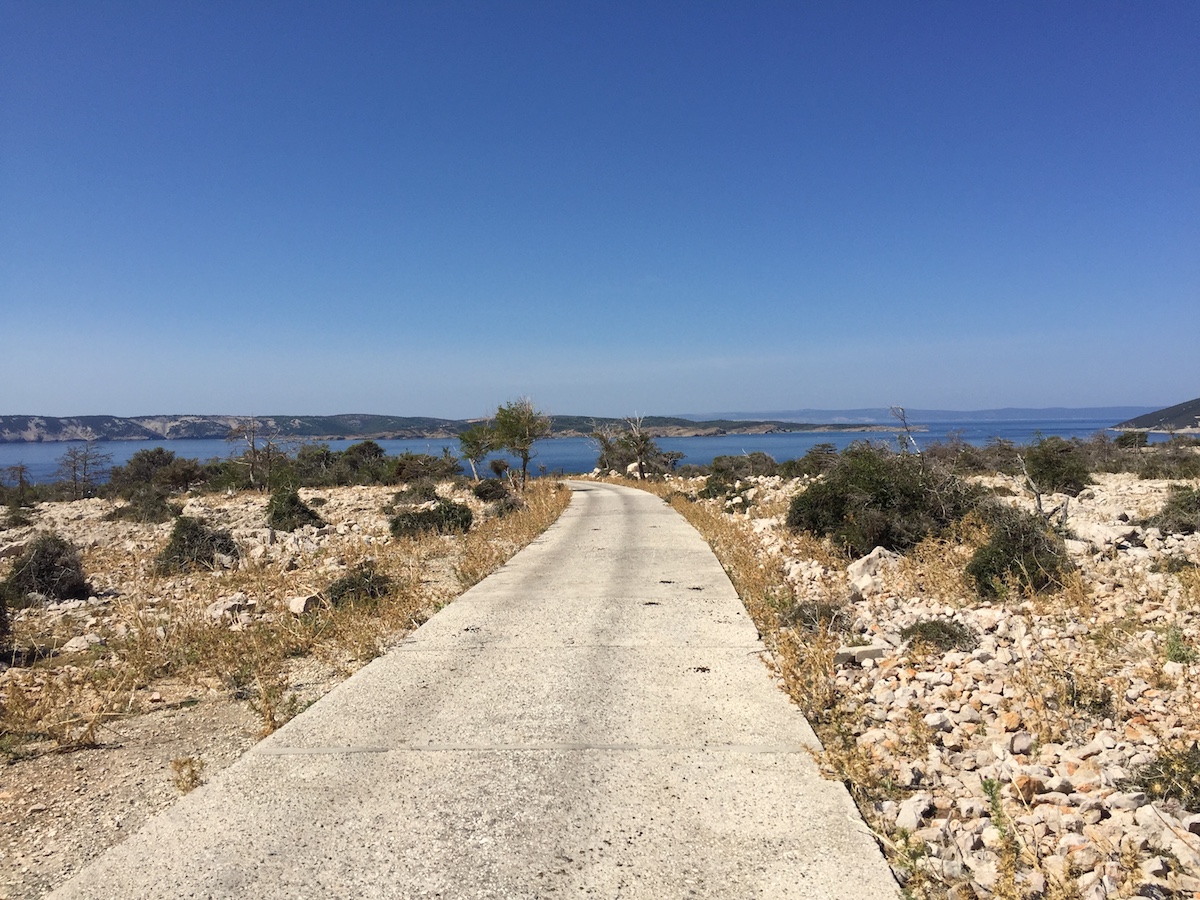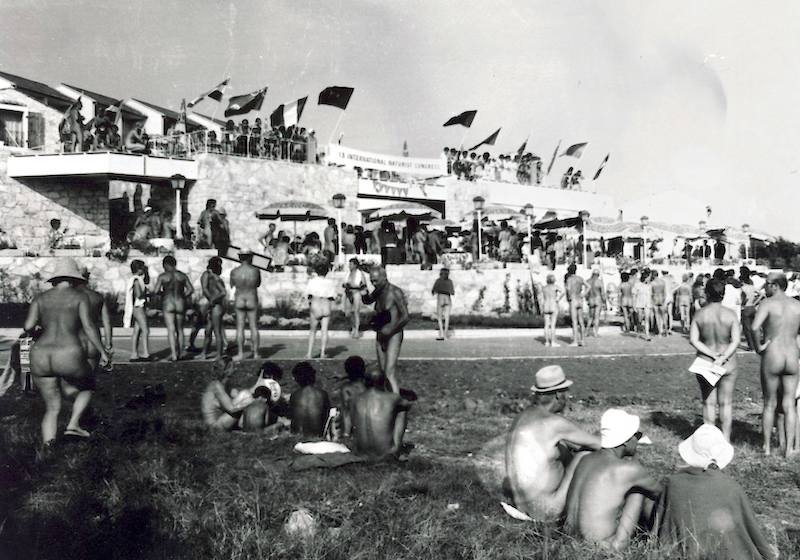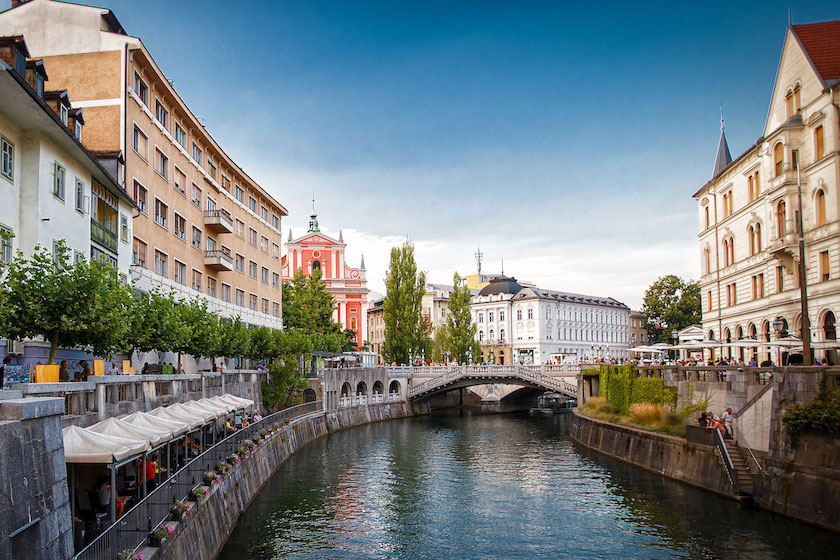Letter from Trieste: the coastal city struggling with the scars of Italian-Yugoslav conflict
Perched on the coast, not too far from the Slovenian-Italian border, the city of Trieste has long been a melting pot of cultures, languages, and nationalities. But it is a history that has also been marked by hatred and intolerance, leaving a legacy with which some are still grappling.
Not so long after the Second World War, my grandfather was sitting at a bar in the Italian city of Trieste with his brother. Maybe they’d had a few drinks, but they soon started mocking a table of Yugoslavs nearby. The men were s’ciavi — a derogatory dialect term for Slavs — who spoke in a strange tongue and had odd habits and who probably didn’t belong in their city. They were soon silenced, though, by one of these same s’ciavi, who informed them in faultless Italian that he perfectly understood the insults being whipped across the room. The man and his companions, it turned out, were exiles from the new communist regime just across the border, and who had made Trieste their home just like many Yugoslavs before and since.
In its uncanny mix of Romance and Slavic, my Nonno’s tale gnaws at Trieste’s continuing identity as a bastard city, neither quite Italian and neither quite not.
An embarrassing story from a forgotten world? Hardly. In its uncanny mix of Romance and Slavic, my Nonno’s tale gnaws at Trieste’s continuing identity as a bastard city, neither quite Italian and neither quite not. That begins with my grandfather himself. He was born in the hilltop village of Albona — first Italy, then Yugoslavia, now Croatia — in Istria, 60 miles from Trieste. Later, he lived in the nearby town of Pula — so close to the Roman amphitheatre, he remembered later, that he would play on the ancient steps with his brother.
Pula and the western Istrian coastline were once almost totally Italian. Further inland Slavs predominated, not that you could always mark a line in the sand where one culture ended and another began. My great-great grandmother was a Bockinski, from Silesia, a region spread over modern day Poland, the Czech Republic, and Germany. Then there was cousin Janos, a Hungarian merchant seaman. And then, still more distant relatives: Austrian postal workers and Armenian horse traders. Whatever my grandfather really was, I share. When I sent a swab to a genetics testing company not so long ago, 24 per cent of my DNA came out — vaguely — as eastern European.
Castello Di Miramare in Trieste. Image: Gerhard Bögner/Pixabay under a CC licence
The muddle of nationalities which made my grandfather also made the city he moved to as a teenager. Before the First World War, Trieste was the main port of Austria-Hungary, the southern terminus of the railway from Vienna, and the seventh busiest harbour on earth. The town quickly turned into a hunter’s stew of nations: Germans and Italians, Slovenes and Croats, Jews and gentiles. Their names may have changed, but walk the streets and this history burrows into your skin like the bora wind that rattles up the Adriatic in January. At Eppinger, one of the smartest cafes in town, you can still buy fist-sized lumps of presnitz, a cake perhaps made to celebrate an imperial visit in 1832. Huddle by the pockmarked apartment blocks and you hear women in furs mutter words like clùca and zìma and mùlza, borrowed from Slovene and Croatian.
Whenever I visit, I notice all this and more. I notice the Laško beer, beloved by local kids but brewed in Slovenia. At Trattoria da Gianni, in the nearby town of Gorizia, I notice what they eat too: enormous lubianska (‘Ljubljana-style’) escalopes, stuffed with cheese. And I notice the bilingual sign, draped from the Slovene theatre on Via Petronio, demanding justice for Giulia Regenija — Giulio Regeni — a local student murdered in Egypt in 2016. Why, then, with Slavic drinks and food and words swirling round Trieste like snowflakes in a storm, did my grandfather and his brother feel the need to take those xenophoibic swipes all those years ago?
Like the multiethnic cauldron of Austro-Hungarian Trieste, perhaps history can help. After Italy finally took the city from the exhausted Habsburgs in 1918, they began making it their own. Trieste, after all, was the patron saint of a blessed and “unredeemed” Italy that had obsessed nationalists for years. So Piazza Grande became Piazza Unità D’Italia and Via dell’Acquedotto became Viale XX Settembre — commemorating the day in 1870 when the newly-unified Kingdom of Italy took Rome from the Papacy. Not that Trieste’s new masters kept to street names. In 1920, a fascist mob torched the Narodni Dom, the Slovene cultural centre. After Mussolini’s takeover in 1922, the Slovene and Croatian languages were squeezed like dirty sponges from Italian life. In 1928, even personal details had to be changed. In the province of Trieste alone, 3,000 Slavic surnames were “made more Italian”.
A view of Trieste. Image: Patrick Muller/Flickr under a CC licence
Worse was to come. In 1941, Italy invaded Yugoslavia proper, quickly occupying then annexing part of Slovenia as the Provincia di Lubiana. Local partisans fought back, with terrible losses. As Mussolini had warned in a speech at Pula in 1920, close to where my Nonno would later frolic with his brother: “I would say we can easily sacrifice 500,000 barbaric Slavs for 50,000 Italians.” He meant what he said. After two years of Italian occupation, thousands of Slovenes had been shot, their cattle butchered and their houses burnt. Thousands more — around 18 per cent of all the people in Ljubljana — were deported to concentration camps. Some, like the camp on the Dalmatian island of Rab, may have had a higher death rate than Buchenwald.
But by the end of the Second World War, the Yugoslavs would taste revenge. As Tito and his fighters reclaimed their country for socialism, thousands of civilians were expelled from Pula and other Italian enclaves, places they had lived for centuries before Mussolini was born. Many others were murdered, thrown with their families into the deep foibe sinkholes that dot the hills above Trieste. As the war ended, moreover, Tito wanted the city to become part of the new Social Federal Republic of Yugoslavia, briefly occupying Trieste until British and American troops arrived. The Allies would stay until 1954, holding Italians and Yugoslavs apart through nine uneasy years of stalemate.
As the war ended, moreover, Tito wanted the city to become part of the new Social Federal Republic of Yugoslavia, briefly occupying Trieste until British and American troops arrived
All this history sticks to Trieste and her people like a nasty cough. A sign on the whitewashed Chiesa di Sant’Antonio commemorates the victims of a 1953 riot against the Allied occupation. When I was last in Trieste, my back to the medieval cathedral, a damp sun slumped in the December sky, I saw a memorial to a 1946 explosion in Pula that killed around 70 Italians. The tragedy may have been accidental, but the plaque decries “a vile attack” against the Italian people, listing victims and their ages from three to 72. The implication, of course, is that this disaster didn’t just happen. It was cynically conceived and viciously executed, probably with orders from Belgrade to finish off those Istrian Italians who had escaped the foibe.
None of this justifies my grandfather’s comments in that cafe way back when, but it may explain the mindset behind them. As he sat in that bar, Trieste had been the scene of ethnic hatred for three decades. His friends had been expelled from his former hometowns, and, like so many other people and places in this corner of Europe, renamed. So his village of Albona had become Labin, and the city he had called Pola became Pula.
Image: Image by Gerhard Bögner/Pixabay under a CC licence
Relations are far gentler now, but earlier tensions have not completely vanished. Some Italian Triestines still distrust their Slavic neighbours. In 2018, one man was jailed for anti-Slovene racism. After the Slovene Narodni Dom cultural centre reopened this year, almost exactly a century after its destruction in 1920, far-right politicians accused funders of “blowing on the embers” of national hatred. Other strains are less explicit, but telling all the same. Last winter, for example, the Chamber of Commerce blamed a “technical error” after putting up signs wishing Happy Christmas in several languages — but not Slovene.
These insecurities are sometimes thrown back to Trieste itself. When a local basketball team played a game in Bologna, some of the home fans chanted that the visitors were Slavs. It was meant as an insult, of course, but 60,000 Slovenes really do still live in Trieste and the surrounding region. And in its food, its speech, its beer, the way the people look and where they go to the theatre: Trieste is still a muddle, a mix of east and west, just like my grandfather and me.
I myself was reminded of this at a party last year, at an elegant Upper West Side apartment and an ocean away from Trieste. I began chatting to a Slovene woman — and when she learnt I had family from the city, she half-seriously suggested that it should, by rights, belong to Ljubljana. Maybe I’d had a few drinks, but I reacted indignantly, even angrily. Well, why not? Trieste has been Italian for over a century, and that’s unlikely to change. Yet in my reaction, perhaps, I betrayed a little of my grandfather and his brother. Whatever the rights and wrongs of the twentieth century — and there were plenty of wrongs, on both sides — Trieste will forever be a little bit Slovene. Perhaps now, as the Nardoni Dom rises once more, is the time to accept it.


